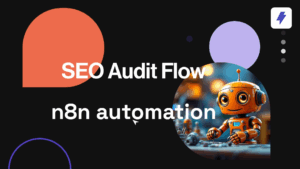Get ready to unlock a new realm of problem-solving possibilities. Straico is thrilled to announce the integration of OpenAI’s latest and greatest: o1 and its more accessible sibling, o1-mini. These aren’t just upgrades; they are a quantum leap forward in AI’s ability to think, reason, and tackle complex challenges, bringing cutting-edge AI technology to your fingertips.
Table of Contents
ToggleThe Dawn of a New AI Era: Understanding o1 and o1-mini
o1 and o1-mini represent a paradigm shift from conventional large language models. Their secret weapon? Reinforcement learning. This revolutionary approach allows them to learn and refine their problem-solving abilities just like humans do – through trial, error, and continuous improvement. They don’t merely process data; they learn from it, adapting their strategies to become more efficient and accurate problem solvers.
Imagine being able to break down even the most intricate problems into manageable steps. That’s the power of o1’s reasoning ability. It analyzes, strategizes, and arrives at solutions with a level of sophistication that blurs the line between human and artificial intelligence.
o1: The Powerhouse of AI Reasoning
o1 isn’t just generating text, it’s actually thinking about solutions. This model excels at tackling complex problems by approaching them like a human expert would: analyzing the situation from different angles, considering various options, and strategically arriving at the best solution.
The key to o1’s impressive capabilities lies in its advanced training method: reinforcement learning. OpenAI has designed this model to continuously improve its thinking process, making it remarkably effective at handling complex challenges. By breaking down difficult problems into manageable steps, o1 mirrors the way humans tackle intricate issues.
o1-mini: Big Capabilities in a Compact Package
Not everyone needs a supercomputer-level AI, but many can benefit from advanced reasoning capabilities. Enter o1-mini, the nimble counterpart to its more powerful sibling. This model packs a serious punch in a more streamlined package, making cutting-edge AI accessible to a wider audience.
Despite its smaller size, o1-mini doesn’t compromise on quality. It still employs the same reinforcement learning techniques, allowing it to think critically and solve problems step-by-step. This model proves that powerful AI capabilities don’t always require massive computational resources.
By offering o1-mini, we’re democratizing access to sophisticated AI reasoning. Now, a broader range of users can harness the power of advanced problem-solving AI to drive innovation and tackle challenges in their respective domains.
Who Can Benefit from These Models?
The applications of o1 and o1-mini are virtually limitless. Here are some key use cases:
- Researchers: Accelerate data analysis and hypothesis generation across various scientific fields.
- Developers: Optimize code, debug complex issues, and explore innovative programming solutions.
- Educators: Create personalized learning experiences and develop advanced educational content.
- Business Analysts: Gain deeper insights from complex data sets and improve decision-making processes.
- Creative Professionals: Explore new ideas in writing, music composition, and visual arts.
And that’s just the tip of the iceberg. From business analysts seeking deeper insights from data to creative professionals exploring new artistic avenues, o1 and o1-mini empower anyone to achieve more.
Our Tests: Pushing the Boundaries of AI Capabilities
To showcase the prowess of these models, we conducted a series of rigorous tests using different AI models comparisons. You can see all the details of our tests down below.
Here’s a glimpse of how o1 and o1-mini performed:
- General Knowledge: Both models excelled in answering diverse questions, demonstrating broad knowledge bases.
- Python Coding: They successfully created scripts to determine prime numbers, showcasing practical coding abilities.
- Coded Language Tasks: While some models struggled, o1 and o1-mini showed promising results in decoding complex language patterns.
- Complex Anagram Solving: Both models successfully solved intricate word puzzles, highlighting their advanced linguistic capabilities.
- Advanced Math: They demonstrated the ability to calculate correlation coefficients, indicating strong mathematical reasoning skills. These results underscore the models’ versatility and their potential to revolutionize various fields through AI-driven problem-solving.
The Importance of Model Diversity in Straico
While o1 and o1-mini are groundbreaking, Straico’s strength lies in its multimodel integration. By offering access to various LLMs, we ensure that users can choose the right tool for their specific needs. This diversity allows for:
- Comparative analysis across different AI models
- Tailored solutions for varying computational requirements
- A broader spectrum of AI capabilities to tackle diverse challenges
Why This Matters: The Future of AI Reasoning
The integration of o1 and o1-mini into Straico represents more than just new features; it’s a glimpse into the future of AI. These models, with their enhanced reasoning abilities, are pushing the boundaries of what’s possible in artificial intelligence.
As we continue to explore the capabilities of these new AI models, we’re excited about the potential breakthroughs in fields ranging from scientific research to creative endeavors. The ability of AI to solve complex problems step-by-step, mirroring human reasoning, opens up new horizons in AI applications.
Moreover, the development of these models, sometimes referred to as OpenAI’s new AI model code-named Strawberry, showcases the rapid advancements in AI technology. The improved reasoning ability of these AI models, coupled with their foundation in reinforcement learning, paves the way for more intuitive and powerful AI assistants in the future.
We invite you to explore o1 and o1-mini on Straico. Whether you’re a seasoned AI professional or a curious newcomer, these models offer an unprecedented opportunity to engage with the cutting edge of AI technology. Join us in this exciting journey as we continue to push the boundaries of what’s possible with artificial intelligence.
Straico’s tests of o1, AI Models comparison
To truly understand the potential of o1 and o1-mini, we put them through their paces with a series of challenging tests. These evaluations were designed to stretch the limits of AI capabilities across various domains. From answering trivia questions to solving complex mathematical problems, we aimed to showcase the versatility and power of these new models.
Test 1: General Knowledge
Prompt:
- What is the capital of Colombia?
- Who was the 43rd President of the United States and what major events happened during his presidency?
- Who won the 1993 World Series? What 4 teams comprised the semi-finals leading up the world series?
| Model | Result (Pass / Fail) |
|---|---|
| Claude Sonnet 3.5 | Pass |
| GPT-4o | Pass |
| GPT 4o Mini | Pass |
| O1-Mini | Pass |
| O1-Preview | Pass |
Test 2: Python Coding
Task: Code a basic python script that will tell if a given number is a prime number or not and output the result on the screen in a printed statement.
Prompt: Code a basic python script that will tell if 10007 is a prime number or not and output the result on the screen in a printed statement.
| Model | Result (Pass / Fail) |
|---|---|
| Claude Sonnet 3.5 | Pass |
| GPT-4o | Pass |
| GPT 4o Mini | Pass |
| O1-Mini | Pass |
| O1-Preview | Pass |
Test 3: Coded Language Task
Task: Each model is given a coded sequence of letters, and the translation of those letters revealing it to be the name of a major US city. The model is then given a new location and asked to solve what the coded sequence should be.
Prompt:“if in a certain code language BOSTON can be written as SNSNSN, then how would you write CALIFORNIA in the same code language? OAOAOA LONLON LOILOILOI LONLONLON”
| Model | Result (Pass / Fail) |
|---|---|
| Claude Sonnet 3.5 | Fail – Wrong code sequence – Came to wrong conclusion. |
| GPT-4o | Fail – Wrong code sequence. It does recognize that there is an alternate pattern that matches the answer. But its initial answer is still wrong. |
| GPT 4o Mini | Fail – Wrong sequence to decode the made-up language. Wrong conclusions. |
| O1-Mini | Fail – Wrong answer |
| O1-Preview | Success |
Test 4: Complex Anagram Solving
Task: A logic puzzle involving a married couple expecting triplets. Each baby’s name is going to be an anagram of one another, using only the first and last letters of their parent’s first names.
Prompt: Ruby and Lewis are expecting…triplets! They already know what they will name their three children, but they aren’t sharing the names until the babies are born. For now, this is all they’ll say: All three babies are boys. Their names are six letters long and anagrams of one another. Their names include both of their parents’ initials, but none of the other letters in their parents’ first names. What will Ruby and Lewis name their triplets?
| Model | Result (Pass / Fail) |
|---|---|
| Claude Sonnet 3.5 | Fail – Came up with 3 real words but only 1 was a name. |
| GPT-4o | Success |
| GPT 4o Mini | Success |
| O1-Mini | Success |
| O1-Preview | Success |
Test 5: Advanced Math – Correlation Coefficient
Task: Two data sets representing subject age and the amount of money earned at that age will be presented to each model. The task for the models is to solve the question whether the two data sets are correlated – that is, as age increases does the amount of money earned increased. The models will do so by calculating the correlation coefficient and showing their work.
Prompt: “A survey was conducted in your city. Given is the following sample data containing a person’s age and their corresponding income. Find out whether the increase in age has an effect on income using the correlation coefficient formula.” (Added the tables into the input)
| Model | Result (Pass / Fail) |
|---|---|
| Claude Sonnet 3.5 | Success – Correct “XY Pairs”, used correct formula, followed logical steps and got the right answer. |
| GPT-4o | Fail – Correct “XY Pairs”, used correct formula, came to the wrong conclusion. |
| GPT 4o Mini | Fail – Recognized the proper “XY” pairs and correct formula. Results were wrong – off by 0.03 |
| O1-Mini | Fail – Understand concept, sorts data, but final calculation is wrong. |
| O1-Preview | Success |


